Toni Braxton and Babyface New Album

By Karu F. Daniels | Photography by Marc Baptiste
Icons Toni Braxton and Kenneth “Babyface” Edmonds are in the midst of the reunion project,Love Marriage & Divorce, that’s inspired by their own publicly rocky former relationships. But while it’s fodder for new music, the past has no place in this duo’s future. It is all about what’s next. And from what we’ve found out, there’s plenty ahead.
“One of the reasons why I became the success I am today is because of Babyface,” says Toni Braxton during a break in filming her clan’s wildly popular WE TV reality show Braxton Family Values. “He said [to L.A. Reid,] ‘She’s Babyface meets Anita Baker, we should sign her.’ And that’s how it started.”
Continuing her trip down her personal A Star Is Born memory lane, the sassy songstress says, “He saw the vision at ‘Hello.’ He’s the one who said, ‘Let’s put her on the Boomerang ‘soundtrack’. So he introduced me to the world!”
Those were the good ole days. If the 1960s and 1970s represent the golden era of black music, then the early 1990s is arguably its platinum one—as an explosion of crossover hits served up in a myriad of fashions from the likes of newcomers En Vogue, Jodeci and Mariah Carey and established artists like Whitney Houston and Janet Jackson soared up Billboard’s charts. Even teen rap duo Kriss Kross became musical tapestry for Generation Xers of all walks. And the Boomerang soundtrack, which gave Boyz II Men their biggest career hit with “End of the Road,” landed right in the middle of this activity in June 1992. The opus, released by LaFace Records—an upstart Atlanta-based subsidiary of Arista Records founded by hitmaking producers Antonio “L.A.” Reid and Edmonds in 1989—also boasted tracks from A Tribe Called Quest, Johnny Gill, Grace Jones, P.M. Dawn and, yes, an R&B ingenue named Toni Braxton.

Babyface, or “Face,” as he is affectionately known, was already a bona fide recording star (as the “Whip Appeal”-singing solo crooner, and with the R&B group The Deele, who gave us “Shoot ’Em Up Movies” and the Quiet Storm staple “Two Occasions”) and an in-demand music producer for Whitney Houston, Pebbles and Bobby Brown, among others, by the time Boomerang was released. So naturally he recorded for and produced the hit film’s soundtrack.
“Give U My Heart,” his duet with Braxton, was the first single. It hit the Top 30 on Billboard’s Hot 100 Singles chart, peaking at No. 2 on the R&B chart. The soundtrack itself reached No. 4 on Billboard’s 200 and topped the R&B/ Hip-Hop Albums chart. Braxton’s solo hit on the soundtrack, “Love Shoulda Brought You Home,” inspired by a line in the film, propelled her self-titled solo debut album, released July 13, 1993, and served as her official entry into the pop music pantheon.
Today is not then, however. Twenty years later, Braxton has endured many ups and downs, all while in the limelight. From messy financial and legal woes, including well-publicized bankruptcies, and a marriage and divorce to Mint Condition drummer/keyboardist Keri Lewis to very public health challenges (recently with her own lupus and her son Diezel’s autism), amid the insanity of the music industry, all while delivering a noteworthy body of work and maintaining a loyal fan base.
After conquering the worlds of R&B/Pop and Dance charts with her 1996 global No. 1 megahit “Un-Break My Heart,” Braxton didn’t rest on her laurels. A much-heralded 1998 Broadway debut in Disney’s Beauty & the Beast exposed her versatility, while opening her up to new audiences—and so did her brief Las Vegas residency at the Flamingo hotel (which she ended early due to health problems). Proving that anything is worth a try, Braxton even took to the big screen in the 2001 dramedy Kingdom Come, alongside Whoopi Goldberg, LL Cool J and Jada Pinkett Smith.
Life hasn’t been a cakewalk for Babyface either. While he has remained active behind the scenes, producing a Music Hall of Fame worth of artists, even now, with the success of new pop sensation Ariana Grande’s debut album, Yours Truly, on which he wrote and produced several songs, including her hit Top 40 single “Baby I,” his solo career has waned in recent years. Plus, his personal life has also had its ups and downs. His 1992 marriage to Tracey Edmonds, with whom he produced several movies in various capacities, including Soul Food and Hav Plenty, and fathered two sons, came to an end in 2005. He also endured a reportedly bitter falling out with Reid (a former X-Factor judge and now the head of Epic Records) that resulted in the dissolution of LaFace, which, in addition to Braxton, enjoyed multiplatinum success with Usher, TLC, OutKast and Pink. Today, he has found love once again with his fiancée Nicole “Nikki” Pantenburg, a former dancer (Janet Jackson) with whom he welcomed daughter Peyton in 2008. Their 2014 nuptials will be his third.
These ups and downs worked as inspiration for Braxton and Babyface reuniting. They have joined forces for three high-profile collaborations: the duets album Love Marriage & Divorce, which has already produced the Top 5 Urban Contemporary hit “Hurt You,” arriving February 4; a stint in March with the Broadway musical After Midnight, which features music crafted by Wynton Marsalis celebrating Harlem’s zenith during the 1920s and 1930s when its legendary nightclubs ruled Manhattan nightlife, in roles Fantasia and Dulé Hill originated; and, finally, a national tour.
These developments are especially impressive in light of Braxton’s widely reported decision toquit the music business. “I was in a small place in my life and I was going to retire,” Braxton explains. “It’s not even a question. I said, ‘I’m tired of fighting.’ I was feeling sorry for myself. I was depressed over where my career was going. I was also down with my health,” she continues. “I found out that I developed blood clots and I couldn’t get a grip on this lupus. I didn’t know what was going on with me. I was just in a very uncomfortable place in my life and where I wouldn’t wish my worst enemy to be.


Startlingly, she shares: “[I was] not suicidal, but it was a close relative. I’ve got my kids to live for, but I was in a hopeless stage in my life.” Good music industry comrades like Michael McDonald, Fantasia and Missy “Misdemeanor” Elliott helped calm her down. “It’s like when you’re going through things and you think you’re the only one. They told me, ‘We’ve all felt that, and we’ve been there but it’s not time.’ It helped me a bit. But Babyface was the most influential of all those people in getting me back to it,” she reveals.
“Toni was kind of just talking about giving up, just not really wanting to record anymore—she was not just having fun at it anymore,” Face shares. “I didn’t think that was a very good idea. I talked her into changing her mind.”
“You know, you can get frustrated with the music industry, but I never get frustrated with the music.” he says. “The music is what drives us to begin with. So I don’t think I ever lost sight of that.”
Besides Love Marriage & Divorce seems like a no-brainer: a concept project featuring two of the biggest talents in the industry, who also share a unique musical relationship. It’s not husband and wife (Ashford and Simpson), not father and daughter (Natalie and Nat King Cole) or brother and sister (BeBe and CeCe Winans). The real question is: What the hell took them so long?
“It wasn’t anything particular,” says Face, a 10-time Grammy winner. “I guess we never really thought about it before. You know you just go through life and you do what you do and you live.”
Still, their partnership wasn’t easy. “Working with Toni was a little bit different than working with her years ago, because now, we’re dealing with a grown-up Toni who certainly has her own opinion in how she thinks things should be. So we went through a lot of compromises putting this record together,” he reveals.
“We were kind of on and off,” he adds. “We started off good, then we slowed down for a bit and just tried to find the things that made sense. We battled on certain songs.”
Despite her well-known reputation for being otherwise, Braxton says there was nothing diva-ish in her actions. “When I first met Babyface, I was this wide-eyed artist, I was green and I was just happy to be there. I had the mindset of, ‘Mold me, make me, what do you think I should be?’” she recalls.
“But, now, I’m an artist like he is: established. I have my own opinions. I know how I want my music to be, so I had to remind him: ‘Kenny, I’m your baby sister, but I have breasts and I have boyfriends. You have to accept that I’m grown up now.’ That was the one big adjustment for him. It was nothing negative, nothing negative at all.”
And Babyface, who has worked with the likes of Aretha, Whitney and Mariah, being the diva whisperer he is, well, adjusted to her demands. “Most of the album I did in Toni’s key,” he admits. “So I did more compromising in terms of trying to figure out the keys, trying to figure out how to sing. Our voices are pretty different from one another in terms of keys, but it ended up working out really well. My main thing was for Toni to shine like she should.”
Success in this day and age, especially from veteran artists, is hard to come by. “While I think there is an audience for their work, especially the crowd that grew up on their sound and is now older and more mature—let’s call it the Essence Music Festival demographic—it might be challenging for them to reach newer and younger audiences, if that is even their aim,” says Dr. Jason King, associate professor at New York University’s Clive Davis Institute of Recorded Music. “The perceived value of R&B and soul music has changed drastically, and it’s also increasingly a game for teens and tweens more than it is an adult contemporary market.”
Braxton shares that she was far more worried about today’s music rat race than Babyface. “He told me, ‘Toni, you have to stop thinking about selling records. Don’t look at it that way, just have fun.’” Face says, “Ultimately my position was to just make it feel good… We weren’t about chasing the trends of whatever is happening now.” After all the trends aren’t what made Toni Braxton and Babyface. Trends don’t build legends.
Playing it safe doesn’t either. And that’s where Broadway comes in. After Midnight marks Braxton’s Broadway return and Babyface’s Broadway debut. “That wasn’t necessarily in my planning,” says Face, who is among the newest Hollywood Walk of Fame honorees. “It’s something that I’ve been approached with a number of times. I’ve always been a lover of Broadway musicals and just Broadway in general. I’ve always come to New York and have gone to plays. That’s one of the things I love to do. I like to bring my kids to New York to see Broadway shows, so it’s not strange to me in that sense. The only thing that’s unique in this case is me actually being on a Broadway stage,” he says.
“I’m a student of everything, but I’m particularly drawn to music from that Cotton Club era. It is something that, of course, I’m not used to” Face continues, “but it’s something that I’m certainly excited about trying to take my go at, so to say. I think the fact that Toni and I are doing it together is smart. She has done Broadway, so it’s kind of old hat for her at this point.”
One of the show’s producers, Carol Fineman, agrees: “We can’t wait to hear Toni wrap her silky, sexy voice around these timeless songs. She’s already proven she has the chops for Broadway, and now we expect real fireworks when we team her vocal prowess and style with both Babyface and the hottest big band Broadway’s ever heard.”
Whether it’s Broadway or a duets album, Babyface says Braxton is the deciding factor. “For me, the songs are what they are. And there are really some great songs there,” he says of their album,Love Marriage & Divorce. “I’m really excited about Toni and hearing her voice,” he gushes. “I realized how much I missed Toni Braxton. It’s so nice to hear her again.”
Lorde The Girl Who Broke The Rules

The story behind the rise of pop's most unlikely new superstar
by ROLLING STONE JANUARY 15, 2014
Lorde is 17, lives with her parents and loves Sylvia Plath. She also has a worldwide smash with "Royals," four Grammy nominations and acclaim for her smart, unique debut album, Pure Heroine. How'd she become the unlikeliest superstar in pop? Contributing editor Rob Tannenbaum travels to Ella Yelich-O'Connor's New Zealand home to answer that question in our new issue (on stands Friday). See 20 snapshots from Lorde's Rolling Stone photo shoot "I get paralyzingly nervous a lot of times, so I tried bravado," Lorde explains, quoting Kanye West's "Dark Fantasy" ("Me found bravery in my bravado"). "The way I dress and carry myself, a lot of people find it intimidating. I think my whole career can be boiled down to the one word I always say in meetings: strength." Curious about the Cramps shirt Lorde's wearing on our cover? Find out more about the punkabilly heroes RS explores Lorde's childhood (when she ignored an adult trying to influence her artwork at the ripe age of two), tracks the crooked path "Royals" took to Number One and examines how Yelich-O'Connor has become an icon for teen girls of all stripes. "Everyone talks about Ella as the anti-Miley because she dresses like a witch and she doesn't twerk," explains Tavi Gevinson, the editor of Rookie, the definitive website for self-aware teen girls. "But it's more nuanced than that. She sings about partying, she curses like a sailor and her songs aren't completely asexual. She reflects an intelligence in girls our age, and normalizes it." Tannenbaum tags along as Ella texts with Taylor Swift, jokingly messes with one of many fans asking for photos on the street (and then apologizes — twice), opens up about the racially-charged controversy that erupted when a photo of her embracing her boyfriend on the beach hit the blogs and chats about how she's taken control of her career and spun seemingly unpopular decisions into genius. "Royals" and 99 more of our favorite songs of 2013 Also in this issue: Alex Morris profiles accidental Girls star Adam Driver, Janet Reitman investigates the Tea Party's war on abortion, Mikael Gilmore remembers Phil Everly and Jeff Tietz tells the story of a cultlike prayer group with deadly secrets. Look for the issue on stands and in the iTunes App Store this Friday, January 17th.
Read More At Rolling Stone Magazine
Jagger's New Swagger: Mick Moves to Movies, Blasts Idea of Memoir

Read More at Hollywood Reporter (See More Photos)
On set in Mississippi as he starts up a new career as a Hollywood producer, the icon shrugs off the outcry over a white director for his James Brown biopic, reveals his brushes with rejection and vows never to write a rock autobiography like Keith Richards did: "If someone wants to know what I did in 1965, they can look it up on Wikipedia."
This story first appeared in the Jan. 31 issue of The Hollywood Reportermagazine.
Mick Jagger is having a Hollywood moment … in Natchez, Miss., of all places. He's come here to be on the set of Get on Up, the James Brown biopic he is producing with his Jagged Films partner, Victoria Pearman. It is Nov. 24, and Jagger is well into his first week on the set, just a few miles away from where the film's director, Tate Taylor, lives. He slinks into the gilded ballroom of the former plantation-turned-historic Dunleith Inn, settles his tiny frame into a plush velvet couch and slips on his glasses, notes in hand. He's ready to talk business, or more specifically, how he has found himself, at age 70, juggling production duties in several notable film and television projects. He is lithe, dressed in sneakers and a baby-blue cashmere sweater, and radiates the kind of healthy glow that comes with Jagger's all-organic sober lifestyle, something he has practiced since 2001.
PHOTOS: Mick Jagger Goes Hollywood
"Then," he says, "you get on with the creative part of it."
There's also time for fun. The night before, in this same room, Jagger hosted a dinner that morphed into a raucous dance party for some 25 cast and crewmembers of Get on Up. After the plates were cleared, Jagger's longtime partner, the fashion designer L'Wren Scott, 47, slipped her iPod onto a dock and began dancing with the film's executive producer John Norris. Then, a circle formed, and everyone -- including Jagger -- took a turn in the center, busting out their best moves. No one seems to remember the songlist, as the alcohol was flowing fast and freely.
"It was a little intimidating," Taylor says. "I was keenly aware that a rock star was watching, but I just said, 'What the hell?' "
It didn't take long, though, before Jagger began showing actor Nelsan Ellis how his character, Brown's collaborator and producer Bobby Byrd, actually danced. This is the type of expertise that almost nobody else has, based on first-hand experience: In 1964, Jagger and the Stones performed at the concert captured on film as The T.A.M.I. Show with Brown and Byrd.
But it's not just insight into dancing and music that Jagger intends to bring to this $30 million undertaking from Universal Pictures. On this project and the many others he has on tap -- including anElvis Presley biopic with Fox 2000, an untitled HBO rock 'n' roll series with Martin Scorsese and Terence Winter, and both a scripted drama series and a Broadway play based on 20 Feet From Stardom, Morgan Neville's Oscar-nominated documentary about backup singers (in which Jagger appears) -- he wants to prove his ability to be more than a rock legend.
EXCLUSIVE: Mick Jagger-Produced James Brown Biopic Casts Its Mick Jagger
Last year, Jagger's tour with The Rolling Stones grossed an estimated $126 million. On Feb. 21, the band kicks off another world tour with stops in Australia, New Zealand, Abu Dhabi, Tokyo, Macau, China and maybe Tel Aviv. He himself is estimated to be worth $305 million. In his presence, multigenerational crowds flock to watch the infamous Jagger swagger, something so familiar that even today's music stars like Adam Levine worship at his feet (Maroon 5's ode "Moves Like Jagger" was one of the biggest hits of 2011). Mick Jagger, arguably the world's last great rock star in a town where the term "rock star" is used loosely to define any variety of people with success, is the real deal.
But in Hollywood, where Jagger's forays thus far have included the promising (2001's Enigma as a producer) and the not-so-acclaimed (1992's Freejack as an actor), the elusive icon still is emerging. But this is where the musician, whose band has sold 250 million albums (but amazingly has won only two Grammys), now says he wants to devote much of his time.
Jagger today splits his time between London, a castle in France's Loire Valley and a home on the Caribbean island of Mustique. He is infinitely fascinated with the human psyche and a voracious reader, tearing through three books a week on a wide range of subjects. A night owl, he often rises at midday. Boardwalk Empire, Breaking Bad and The Sopranos are among his all-time favorite TV shows.
With producing partner Pearman, a fellow Brit whom he met through his close friend ArnonMilchan when Pearman was an executive at Milchan's New Regency, Jagger will discuss the latest Booker Prize winner or hot British playwright. And, at least on this day, he seems outright uncomfortable talking about music. Otherwise calm, if not slightly guarded, he is most at ease talking about the more mundane, like meeting the local sheriff of Natchez during a tour of the town. But he begins tugging his sweater and fussing with his hair when the conversation shifts to The Rolling Stones, whose last studio album, 2005's A Bigger Bang, sold 2.4 million copies.
STORY: Hollywood Nightlife, Inside the Exclusive Giorgio's, the New Spot That's Drawn Mick Jagger
He also appears disinterested at this moment in establishing his rock legacy. When asked about the success many of his rock peers have had with their books, notably his own bandmate KeithRichards, whose 2010 best-seller, Life, included some uncharitable observations about Jagger, he scoffs: "I think the rock 'n' roll memoir is a glutted market. I'd rather be doing something new. I'd rather be making new films, making new music, be touring. If someone wants to know what I did in 1965, they can look it up on Wikipedia without even spending any money."
So Jagger, in this role, now is juggling an array of projects, from his small shop, wielding the influence necessary to be a successful producer. Most of the projects are being developed with and financed by major studios or networks. "There's virtually nobody on the planet who's not gonna take the call from Mick Jagger, which as a producer is an incredible asset to have," says Neville, who also worked with Jagger on 2012's HBO documentary Crossfire Hurricane. "It moves mountains, which is what a lot of producing is about."
Jagger, however, also has learned the hard rule of Hollywood Rejection 101: People in the entertainment business are not too star-struck to turn him down. "It's a bit like saying no in Japan," he says. "They don't say no, directly. They say no indirectly."
The idea for the James Brown biopic, set to be released Aug. 1, was first hatched by producer BrianGrazer more than a decade ago. Before Jagger came on board, Spike Lee was attached to direct the project, which was written by Brit brothers Jez and John-Henry Butterworth, with WesleySnipes and later Eddie Murphy as Brown. But he insisted on a $75 million budget.
"Spike could have made the movie years ago," says Grazer, whom Jagger knew socially before bringing him to the project. "But he assigned such a high number to make the movie for that no studio would do that."
When Brown died in 2006, his estate was in flux, and the project hit a dead end. Then PeterAfterman, who runs the James Brown estate, approached Jagger about doing a documentary on the Godfather of Soul.
"I said, 'Let me think about it,' " Jagger recalls. "So I woke up in the morning and said, 'I'll do the documentary. But would you like to do a feature?' "
PHOTOS: Mick Jagger at 70, A Rolling Stone Through the Years
With the music rights secured thanks to Jagger's involvement, suddenly the stalled project was revived. In late 2012, Jagger and Grazer hired Taylor, whose star was rising in the wake of the box-office and critical success of The Help. The choice sparked controversy, though, with some complaining that only a black director should tackle James Brown's life story. Director JohnSingleton expressed unease with the project in an essay last year for THR even as he praised Grazer's past work with African-American actors and noted that Brits often have a greater appreciation for black culture than some white Americans.
"Still, it gives one pause that someone is making a movie about the icon who laid down the foundation of funk, hip-hop and black economic self-reliance with no African-American involvement behind the scenes," Singleton wrote.
Jagger has no patience for such criticism. "By that logic, only English people can play English people, only Americans can play Americans," he says, a little fire showing in his eyes. "I mean, come on. Look at [Cate Blanchett's] Elizabeth. That was a really great movie directed by an Indian [ShekharKapur]. I don't care if you come from Timbuktu or Tonkin or, you know, London. It doesn't matter."
Casting the actor to play Brown was the final critical decision. Jagger and Grazer drafted ChadwickBoseman, who already had stepped into the shoes of another trailblazer as Jackie Robinson in 2013's 42. Jagger says that casting Boseman was "such a key thing." He adds, "You gotta get the guy right. You've got to get him perfect. Chad's really worked very hard on [preparing]."
Fast-forward a year, and Jagger and Grazer were preparing to leave for their November trip to Natchez. Jagger first made a pitstop in Los Angeles, where they convened at a party at JimmyIovine's house.
"He danced for like an hour and a half straight," Grazer remembers. "R. Kelly was playing, and Mick got everyone dancing, even Oprah. You couldn't leave. He was magnetizing."
STORY: Mick Jagger to Be a Great-Grandfather
But it's the rocker's hands-on involvement with Get on Up and his other producing projects that has earned Jagger major props from studio executives and fellow producers. In fact, Jagger eschews the drive-by role often typical of a celebrity producer.
When Fox chief Jim Gianopulos was looking for input on marketing materials for the international release of the 2008 Rolling Stones documentary Shine a Light -- which Scorsese directed and Jagger produced -- he asked whom to contact. "I was told, 'You have to talk to Mick.' I thought, 'Oh, it's the Stones' publicist or their manager or some agent.' And I said, 'Mick who?' They said, 'Jagger.' I said, 'You're kidding.' "
Sure enough, Gianopulos found Jagger to have informed opinions on virtually every aspect of the production, from trailers to key art. Lurking behind Jagger's rock god persona was, he says, "a very creative, disciplined and intelligent businessperson."
Scorsese isn't surprised, arguing that Jagger's talents and his experience are sui generis. "Mick is absolutely alone in a very important sense -- he's a consummate artist, performer and businessman," he says. "I have a feeling that nothing escapes his notice. No detail is too small. So, here's a guy who has been at the center of the music industry for many years, on multiple levels, and he has what appears to be a perfect memory as well as a rich sense of character and of drama, of cinema. … Who could be a better artistic collaborator?"
Jagger has been gaining his footing as a producer for nearly two decades. He and Pearman bonded over their shared love of literature and formed Jagged Films in 1995. After stumbling upon RobertHarris' Enigma, a thriller about World War II code breakers first published in the U.K., he urged L.A.-based Pearman to acquire the rights. Lorne Michaels already owned the option, so Jagged teamed up with Michaels' Broadway Video. Jagger enlisted friend and Oscar winner Tom Stoppardto write the screenplay, and the 2001 Kate Winslet starrer became Jagged's first narrative feature credit. The film earned $15.7 million worldwide and earned mostly positive reviews.
EXCLUSIVE: Dan Aykroyd, Jill Scott Join James Brown Biopic 'Get On Up'
Jagged Films' next project, Diane English's 2008 remake of The Women, didn't fare as well with critics, who eviscerated the performances of the buzzy cast that included Meg Ryan and AnnetteBening. Still, the $16 million film earned $50 million worldwide. But aside from the occasional Stones documentary like Shine a Light, Jagger has been relatively quiet. Until now.
After Get on Up (Jagger's cameras simultaneously are rolling on the Brown documentary, helmed by Oscar winner Alex Gibney), Jagger will segue to the untitled Scorsese-Winter HBO series. The project, which Jagger originally pitched to Scorsese as a feature idea 10 years ago, is a decades-spanning chronicle of the changing music industry through the eyes of a fast-talking A&R executive. The pilot, which is being written by Breaking Bad's George Mastras, is scheduled to shoot early this year with Bobby Cannavale starring.
Jagger also hopes to begin filming Last Train to Memphis, the Elvis biopic, in early 2014. KevinMacdonald (The Last King of Scotland) is directing with Jagger's longtime friend Steve Bing co-producing. T Bone Burnett is the musical director. As with the casting of James Brown, Jagger knows that choosing the young Elvis will be a crucial, highly scrutinized decision. "The actor has to have a look, but they also gotta have that kind of magnetism," he says. "People would fall down at their feet [for Elvis]. You've got to make that be believable."
Further down the road is the Jagger-produced Fresh Tears, with Iain Softley in talks to direct. Jagger will play a supporting role in the coming-of-age story set against the backdrop of the music industry, which reunites the Hitchcock team of producer Tom Thayer and writer JohnMcLaughlin.
Jagger chafes at the notion that he's focused only on music-themed projects. "Normally, people want to talk to me about being onstage, and if they want to hear about the film thing they go, 'Oh yeah,' " he says. "But I'm not just interested in doing musical films."
STORY: The Rolling Stones to Perform '14 on Fire' Tour Dates in Asia, Australia
As proof, he points to Tabloid, a film that he will produce and star in, tackling the role of a RupertMurdoch-esque media mogul. Oscar-nominated writer Josh Olson (A History of Violence) wrote the screenplay, and Bing is financing through his Shangri-La Entertainment. Jagger and Pearman also are producing Tiny Problems of White People with Dallas Buyers Club producer Rachel Winter. In the family drama written by Will Aldis, Jagger will play a mythical character named DeVere.
The two acting vehicles could help reverse the perception that Jagger never has been able to parlay his personal charisma onto the big screen. Michaels, for one, argues it's an unfair rap. "He's funny and smart, and you don't get to see that side," Michaels says, adding that he considers Jagger's 2012Saturday Night Live hosting gig one of the best in recent years.
"It's easier on SNL as it is for Justin Timberlake, too," Michaels concedes. "They're already larger-than-life characters. It's hard if he's playing the bank manager in Philomena. You go, 'Hey, there's Mick Jagger.' "
For almost anyone, Jagger's to-do list would be daunting. And yet the soon-to-be great-grandfather (he has seven children and four grandchildren) is at a loss to fully explain why he's suddenly doing so many different things. "I've been doing it for quite a long time, you know," Jagger explains.
STORY: Bon Jovi, Taylor Swift and Rolling Stones Honored at Billboard Touring Awards
Compartmentalization, clearly, is necessary. "I watched the guy go from selling out the Barclays Center [in 2012] and then, a day later, sit in a meeting," Terence Winter says. "He just puts a different hat on and now he's a producer. It's like he's literally the biggest rock star in the world in the middle of a tour and then he can switch gears and just start talking about a script and story changes."
But even among Hollywood's most powerful, there's a sense that Jagger remains a unique creative partner, one who occupies a rarefied station among Tinseltown's rarefied. Gianopulos says he often finds himself in the middle of a business conversation and, "I think, 'Wow, I'm talking to Mick Freakin' Jagger,' " he quips. Fox 2000 head Elizabeth Gabler, who is working with Jagger on Last Train to Memphis, has worked with plenty of A-listers, but even she admits she was completely starstruck.
"I was nervous to meet him, and I thought that I would be speechless," Gabler says. "But I found him to be just so knowledgeable and passionate and engaged and completely in the present and funny. After a while, I forget that I've grown up with this person who is such a large part of our cultural landscape."
E-mail: Tatiana.Siegel@THR.com
Twitter: @TatianaSiegel27
Thirty Seconds To Mars Lead Singer Jared Leto in Nylon Magazine

The thirty seconds to mars singer and dallas buyers club star on his "gothic gardener" style.
by: nylon tv
December 16 2013
Walking on Thin Ice: A Career-Spanning Conversation With Yoko Ono
For more than 50 years, Yoko Ono has straddled the worlds of visual and conceptual art, pop music, fashion, and feminism — it's only now that everyone else has caught up with her

Yoko Ono is the muse. Not just for John Lennon, whose love and devotion for her resulted in some of the most beautiful, and most interesting, music of his career. A pioneering artist, musician, activist, and feminist, Ono has influenced immeasurably those artists daring enough to push at and experiment with the imaginary boundaries between art forms and media. Without Ono, who knows whether the work of firebrands ranging from Lady Gaga to Kim Gordon would exist, or how differently we might see it? Her force is such that even in the face of her husband's murder, the vilification of misogynists and racists, of the government warmongers who would oppose and profile her, she refused to be deterred. Ono's talent is formidable, but perhaps her most prominent quality is her spirit. Ono, who recently turned 80, was born in Tokyo in 1933 and first came to New York City to attend Sarah Lawrence College. There, she began her first forays into the art world (along with her friends, Johns Cale and Cage) and by the 1960s was exploring her work with the Fluxus movement. One of Ono's most important performances, 1964's Buddhism-influenced "Cut Piece," invited the audience to approach her with silver scissors and snip off pieces of her dress. The artist statement for the piece read: "People went on cutting the parts they do not like of me finally there was only the stone remained of me that was in me but they were still not satisfied and wanted to know what it's like in the stone. P.S. If the butterflies in your stomach die, send yellow death announcements to your friends." From the beginning, death, giving, and living have been Ono's major themes. After Lennon was killed in 1980, her art became more acute, more emotional, more powerful. The photograph on the cover of Season of Glass, the solo album she released in 1981, features Lennon's bloodied glasses next to a half-empty/half-full glass of water, with the New York skyline standing in the background. The album's "No, No, No" is a funereal dance song, beginning with four gunshots and a peal of Ono's heartbroken wails. It's also the ne plus ultra of what some people find so objectionable about Ono's music: the screeching, the screaming, the unbridled emotion. But more than that, the song is proof of her gift. There's a purity of intention that, over the course of so many years, remains unmatched. While Ono was touring the world, SPIN exchanged emails with the artist about her process, how she experiences art, and Take Me to the Land of Hell, the new album.
The Year In Jazz, 5 Songs For 2014
Because It's Never Too Soon To Survey The Year

From the outside looking in, it may seem as if jazz recordings have slowed to a flurry. But it's really more like a blizzard, with dozens already coming down in the new year — including new efforts from big names like Pat Metheny, Danilo Pérez and Brad Mehldau. Before we're snowed under, here are a few others worth hearing.
Listen to Music For All Artist at NPR

The Venezuelan pianist Edward Simon is part of a growing coterie of Latin American musicians both fluent in jazz and deeply engaged with the folk music of their native lands. His latest recording, Venezuelan Suite, is anchored by the eponymous four-part work. The adjective isn't impressionistic, but specific; each part of the work adapts a different folk form. (For example, "Caracas," heard here, is set in the 5/8 Venezuelan merengue.) It's also colorfully orchestrated, with flute, bass clarinet, maracas, the guitar known as the cuatro, and so forth. The particular combination of richness and lilt here seems unforced, the product of someone who's aimed at this target for a long time.

The singer Zara McFarlane can do a more-or-less jazz thing, with walking bass and ride cymbal and such, and sounds fundamentally comfortable doing so. But she's also interested in songwriting; owing to a Jamaican-British background, she filters reggae into the equation, either explicitly or as transformative covers. On her new recording, If You Knew Her, it's what she subtracts that distinguishes. Several songs are sparsely arranged as duets with acoustic guitar, or piano, or bass, or — in the first tune, "Open Heart" — kalimba and arco bass. That gives the whole record an intriguingly unsettled quality. It invites remixes, or a live performance to see how something so deliberate breathes outside the studio, or headphones on an overcast winter day.

The tenor saxophonist James Brandon Lewis has a moderately bright and focused tone, a few higher education degrees, a few years in the gospel scene and a growing network within New York's free jazz community. You can hear all that on his new record Divine Travels, a trio date with William Parker (bass) and Gerald Cleaver (drums). Reductively, it could be described as one part conservatory, one part church, one part '60s "new thing" (complete with spoken-word overlays). A better way to actually listen to Divine Travels is to pay attention to Lewis' repetition — how he takes motifs or bits of melody and continually iterates. "Wading Child in the Motherless Water" mashes up two familiar spirituals. It's the longest piece on this album by far, completely justified by its continual flux.

The cheery drummer (and now public radio host) Matt Wilson isn't one of those recording artists whose career arc you can trace through a rapidly evolving solo discography, a la Miles Davis or John Coltrane; you pretty much know what you're going to get. In this case, that's a good thing. A Matt Wilson record will swing in a way that feels old-school but relevant; it'll feature Ornette Coleman-like free-floating melody and cleverly sourced covers; it will have a bit of outré improvisation and ornamentation, performed with love. Gathering Call, Wilson's latest for his quartet, adds a fifth member in pianist John Medeski (of Medeski Martin and Wood). Medeski's all-court game has synced well with his buddy since the late '80s, happily locking into hard-bop grooves.

In 1971, a rebellion in New York's Attica Prison prompted a violent police crackdown, killing 39, including 29 inmates. It prompted saxophonist Archie Shepp to record his large ensemble oratorio Attica Blues, now a classic work, in early 1972. It was funky and pan-stylistic — this was 1972, after all — and it was a bluesy protest lament — again: 1972. The work (plus Archie Shepp arrangements from around then) was revived recently at a series of concerts in France, featuring French and American musicians of multiple generations. The disc I Hear The Sound, compiled from 2012 and 2013 jazz festivals, isn't quite as tight as the studio version, and some of the revisions don't feel necessary. But you do get the raw power and emotional yearning of songs like "The Cry of My People" (featuring Ambrose Akinmusire on trumpet). These pieces stood for something bigger than the sum of their many musicians, and that comes across here.
Pope Francis Gentle Revolution

by MARK BINELLI
JANUARY 28, 2014
Entire Article at Rolling Stone Magazine
Nearly every Wednesday in Rome, the faithful and the curious gather in St. Peter's Square for a general audience with the pope. Since the election of the former Jorge Mario Bergoglio last March, attendance at papal events has tripled to 6.6 million. On a recent chilly morning in December, the thousands of amassed pilgrims appear to gleam in the sunlight, covering the square like a pixelated carpet. Maybe it's all the smartphones raised to the heavens.
Beyond Pope Francis: 10 conservatives who have gone liberal Up close, Pope Francis, the 266th vicar of Jesus Christ on Earth, a man whose obvious humility, empathy and, above all, devotion to the economically disenfranchised has come to feel perfectly suited to our times, looks stouter than on television. Having famously dispensed with the more flamboyant pontifical accessories, he's also surprisingly stylish, today wearing a double-breasted white overcoat, white scarf and slightly creamier cassock, all impeccably tailored.
The topic of Francis' catechesis, or teaching, is Judgment Day, though, true to form, he does not try to conjure images of fire and brimstone. His predecessor, Benedict XVI, speaking on the topic, once said, "Today we are used to thinking: 'What is sin? God is great, he understands us, so sin does not count; in the end God will be good toward all.' It's a nice hope. But there is justice, and there is real blame."
Francis, 77, by contrast, implores the crowd to think of the prospect of meeting one's maker as something to look forward to, like a wedding, where Jesus and all of the saints in heaven will be waiting with open arms. He looks up from his script twice to repeat key lines: avanti senza paura ("go without fear") and che quel giudizio finale è già in atto ("the final judgment is already happening"). Coming from this pope, the latter point sounds more like a friendly reminder. His voice is disarmingly gentle, even when amplified over a vast public square.
Eventually, he moves to greet the crowd. Benedict, a dour academic, kept this portion of the general audience to a minimum. But Francis, like Bill Clinton, thrives on personal contact, and he spends the better part of an hour greeting believers. Next to the dais, a rowdy hometown team of Italians, a couple of whom spoke loudly on their cellphones throughout the pope's sermon, have their cameras out like paparazzi. "Papa Francesco! Papa Francesco!" they shout, shrilly and incessantly, trying to get the Holy Father of the Catholic Church to gaze in their direction. The most shameless hold up children. "Papa Francesco!" they cry. "I bambini! I bambini!" It's a funny thing, papal celebrity. As the archbishop of Buenos Aires, Bergoglio had never been an especially gifted public speaker. But now that he's Pope Francis, his recognizable humanity comes off as positively revolutionary. Against the absurd, impossibly baroque backdrop of the Vatican, a world still run like a medieval court, Francis' election represents what his friend Elisabetta Piqué, an Argentine journalist who has known him for a decade, calls "a scandal of normality." Since his election last March, Francis has consistently confounded expectations with the simplest of gestures: surprising desk clerks at the hotel where he'd been staying during the papal conclave by showing up to pay his own bill; panicking bodyguards by swigging from a cup of maté (the highly caffeinated tealike beverage popular throughout South America) handed to him by a stranger during a visit to Brazil; cracking up cardinals with jokes at his own expense hours after being elected (to those assembled at his first official dinner as pope, he deadpanned, "May God forgive you for what you've done"). After the disastrous papacy of Benedict, a staunch traditionalist who looked like he should be wearing a striped shirt with knife-fingered gloves and menacing teenagers in their nightmares, Francis' basic mastery of skills like smiling in public seemed a small miracle to the average Catholic. But he had far more radical changes in mind. By eschewing the papal palace for a modest two-room apartment, by publicly scolding church leaders for being "obsessed" with divisive social issues like gay marriage, birth control and abortion ("Who am I to judge?" Francis famously replied when asked his views on homosexual priests) and – perhaps most astonishingly of all – by devoting much of his first major written teaching to a scathing critique of unchecked free-market capitalism, the pope revealed his own obsessions to be more in line with the boss' son.
5 economic reforms millennials should be fighting for The touchingly enduring Mr. Smith Goes to Washington/Bulworth/Aaron Sorkin fantasy in which a noble political figure finally tells the American people the truth tends not to happen in real-life democracy, you may have noticed. There's too much money, too many special interests infecting electoral politics. Such a scenario could probably take place only in an arcane throwback of an institution like the Vatican, where secret ballots and an utter absence of transparency made the rise of an unknown quantity like Bergoglio possible. Had the race instead been for an obscure House seat in Kentucky, the opposition research team would have reduced his campaign to rubble within a couple of weeks. By all accounts, the papal conclave that elevated Bergoglio assumed it was electing a fairly anodyne compromise candidate. Cardinals liked the idea of a pope from Latin America, one of the Church's leading growth markets. They also responded well to a stirring three-minute speech Bergoglio gave during the conclave, in which he said the Church, in order to survive, must stop "living within herself, of herself, for herself." But he gave no other indication that he'd be any kind of change agent. In the days after his election, most newspapers described him as a safe, conservative choice. Bergoglio himself had already picked out a retirement spot back home in Argentina, where he fully expected to return after participating in the conclave as a voter. "When he first found out he was elected," says Piqué, "he didn't know if it was a dream or a nightmare. I'm sure he's feeling like he's in a cage." There would be many reasonable ways to respond to this new reality. Stoical Christian resignation. A cry of "Why me, Lord?" One could also be invigorated by the challenge, and maybe even decide to cause some trouble. Alongside many noble men of God, there have been plenty of truly terrible popes, as John Julius Norwich's history of the papacy, Absolute Monarchs, which often reads like a freaky hybrid of House of Cards and Game of Thrones, makes clear. There was Stephen VI, who exhumed the eight-month-old corpse of his predecessor, Formosus, and subjected the body, dressed in papal vestments and propped up on a throne, to a mock trial. (The corpse was found guilty and thrown into the Tiber.) Writing of the Church under Clement VI, elected in 1342, Petrarch described prostitutes "swarm[ing] on the papal beds," adding, "I will not speak of adultery, seduction, rape, incest; these are only the prelude to their orgies." Norwich quotes the writer Gerard Noel on Pope Innocent VIII, who "grew grossly fat and increasingly inert, being able, toward the end of his life, to take for nourishment no more than a few drops of milk from the breast of a young woman." The loathsome, anti-Semitic Paul IV "took a special delight in the Inquisition" and managed to halve the Jewish population of Rome in five years. Pius XI described Mussolini as "a man sent by Providence." The Catholic church's secret sex-crime files Benedict XVI would certainly not merit inclusion in this rogues' gallery, but it's hard to imagine a worse choice to meet the particular challenges facing the Catholic Church over the past decade than Cardinal Joseph Ratzinger. Prior to being named pope in 2005, Ratzinger had served the role as chief doctrinal enforcer for his predecessor, the beloved, but also quite reactionary John Paul II. In his fight against the liberalizing efforts of the Second Vatican Council, JPII, as he's known around the Vatican, cracked down on progressive Catholic groups like the Jesuits, while welcoming controversial hypertraditionalists Opus Dei into the Church's mainstream. Lay "numerary" members of the latter group take vows of celibacy and practice corporal mortification: whipping themselves or wearing a cilice, a spiked metal chain bound to the thigh as a penance and a reminder of Jesus' suffering. A 1986 letter issued by Ratzinger, "On the Pastoral Care of Homosexual Persons" (also known as Homosexualitatis Problema), described homosexuality as an "intrinsic moral evil."
Leading proponents of liberation theology, an explosive, Marxist-tinged Catholic movement that swept through Latin America in the Seventies and Eighties, were marginalized by Ratzinger's office and seen as heretics. At the same time, his team responded to the endless pedophilia revelations that wracked the Church in recent decades with "denial, legalistic foot-dragging and outright obstruction," to quote an exhaustive 2010 New York Times investigation. After he became Pope Benedict in 2005, Ratzinger couldn't seem to catch a break, and he certainly lacked the ability to apply his widely acknowledged brilliance as an academic to snuffing out fires in the real world. In 2009, a massive money-laundering scandal was uncovered at the Vatican bank, which controls about $8.2 billion in assets. Then came the betrayal known as VatiLeaks, in which Benedict's own trusted butler stole reams of secret documents revealing embarrassing inner workings of the Holy See. The Italian press thrilled to the juiciest particulars, including allegations of a gay smear campaign, missing cash, attempted tax evasion (abetted by the Berlusconi administration), runaway spending (e.g., a $350,000 crèche) and suspicious gifts (e.g., the $100,000 worth of truffles offered to the pope by an Italian businessman).
Reportedly, the tipping point for Benedict came after a trio of cardinals charged with investigating VatiLeaks submitted their report, revealing a network of gay Vatican employees and outsiders making threats of exposure. "He just didn't have the personality or the strength to deal with everything that was happening," one Vatican insider tells me. Shortly after Benedict shocked the world last February by announcing he'd be the first pope to resign in more than 700 years, one final indignity followed him out the door: the disclosure in La Repubblica that Italy's largest gay bathhouse happened to be a tenant of a building owned by the Vatican. One town's war on gay teens Through it all, though, as church attendance in the United States and Europe continued to plummet, one group remained loyal to its pope: ultraconservative American Catholics. In particular, politicians. The religious right's pact with the GOP had initially been brokered by evangelicals like Pat Robertson, historically never huge fans of their spiritual brethren in Rome. (As recently as 2011, a spokesman for the Wisconsin Evangelical Lutheran Synod attempted to clarify accusations of anti-Catholic bigotry by explaining that his group "primarily views the office of the papacy as the Antichrist, not the individual popes themselves.") But the lines have blurred. Right-wing Catholics like Newt Gingrich, Paul Ryan, Marco Rubio and Jeb Bush populate GOP presidential fields past and future, and Rick Santorum as well as Gov. Sam Brownback of Kansas have been linked to Opus Dei.
Open dissent, of course, is a rare thing in an organization as hierarchical as the Catholic Church. But I figured if any group would express a distinct lack of enthusiasm about their new Jesuit pope, it would be Opus Dei, and so one afternoon, I met up with Father John Paul Wauck, an American Opus Dei priest who has been living in Rome for nearly 20 years, where he teaches literature at the Pontifical University of the Holy Cross. Before taking his vows, he worked as a political speechwriter for William Barr, the attorney general under George H.W. Bush, and Gov. Robert Casey of Pennsylvania, whom Wauck describes as "the last of the big pro-life Democrats." A trim, cheery 50-year-old who grew up in the same Chicago suburb as Hillary Clinton, Wauck displays a Midwestern eagerness to please as he leads me on a tour of Holy Cross.
Up on the roof, which provides a panoramic view of Rome, he points out a villa where Galileo was imprisoned by the Church during his Inquisition for promoting the dangerous idea that the Earth revolves around the sun. Downstairs, we duck into an 18th-century chapel where, Wauck says, Mozart played as a boy. Wauck directs my eye to a painting of Aloysius Gonzaga, the great Jesuit saint. At Gonzaga's feet, a fat cherub holds a tiny spiked whip. "Corporal mortification used to be universal!" Wauck says. "Until fairly recently, pretty much all religious orders did it. Mother Teresa's nuns still do. It's not something unique to Opus Dei. We just didn't abandon it." Wauck, who does not seem all that conservative for a member of Opus Dei – at one point, he asks excitedly if I've read Eminent Hipsters, the new memoir by Donald Fagen of Steely Dan – nonetheless downplays the pope's call for a truce in the culture wars. "I certainly have no problem at all with anything the pope says," he tells me. "I do think there has been a bit of selective reading. People are emphasizing certain things and forgetting other things that he also said." For instance, Wauck points out that the pope often speaks about the devil, "much more than I ever remember Benedict doing." Likewise, he notes that Francis' comments about the church's obsession with gay marriage and abortion did not propose any real doctrinal changes. "The pope never said those issues weren't important," Wauck says. "He said that when we talk about these things, we have to talk about them in a context. And who would disagree with that? So when people are trying to figure out what kind of guy is this, you have to hear all the bells, not just the ones that sound like, 'Oh, he's going to change everything.'"
This is a common retort among conservative Catholics about Pope Francis: You guys in the secular liberal media just aren't listening. Santorum has insisted the pope's comments on gays and abortion were taken out of context. New York Cardinal Timothy Dolan, a conservative who had made a number of papal long lists in March, also wasted no time in translating Francis' message, telling CBS This Morning, "Pope Francis would be the first to say, 'My job isn't to change church teaching. My job is to present it as clearly as possible. . . . While certain acts may be wrong . . . we will always love and respect the person and treat the person with dignity.'" While much of this sounds like wishful thinking, they also have a point: The pope's tonal changes don't necessarily signal a wild swing from tradition. Francis has ruled out the ordination of women, for example, and he still considers abortion an evil. But those obsessed with contextualizing Francis would do well to take a look at the impromptu press conference he granted last summer to gathered Vaticanisti (members of the Vatican press corps) during the flight back from a trip to Rio. Father Federico Lombardi, director of the Vatican press office, told me he'd expected the press conference would go about 20 minutes. It lasted for nearly 90, and ended up including the pope's famous "Who am I to judge?" response, which is normally the only part of the exchange that's quoted. But reading the full transcript or, better yet, watching longer excerpts on YouTube helps to convey the true context.
A reporter asks Francis, who is standing at the head of the aisle, about the existence of a "gay lobby" within the Vatican. Francis begins by making a joke, saying he hasn't yet run into anyone with a special gay identification card. But then his face becomes serious and, gesturing for emphasis, he says it's important to distinguish between lobbies, which are bad – "A lobby of the greedy, a lobby of politicians, a lobby of Masons, so many lobbies!" he says later in the press conference – and individual gay people who are well-intentioned and seeking God. It's while speaking to the latter point that he makes the "Who am I to judge?" remark, and this part of the video is really worth watching, because, aside from the entirely mind-blowing fact of a supposedly infallible pope asking this question at all, his answer is never really translated properly. What he actually says is, "Mah, who am I to judge?" In Italian, mah is an interjection with no exact English parallel, sort of the verbal equivalent of an emphatic shrug. My dad's use of mah most often precedes his resignedly pouring another splash of grappa into his coffee. The closest translation I can come up with is "Look, who the hell knows?" If you watch the video, Francis even pinches his fingers together for extra Italian emphasis. Then he flashes a knowing smirk. Father Thomas J. Reese, a senior analyst at the left-leaning National Catholic Reporter, says the arguments about style versus substance when it comes to Pope Francis are missing the point entirely. "In the Catholic Church, style is substance," Reese says. "We are a church of symbols. That's what we call the sacrament: symbols that give us grace. These things really matter. So Francis is already changing the church in real ways through his words and symbolic gestures. He could sit in his office, go through canon law and start changing rules and regulations. But that's not what people want him to do."
Reese, who is 68, used to be editor in chief of America, the Jesuit magazine that published a long interview with Pope Francis in the fall. Reese was forced to resign in 2005 after the Vatican – specifically, Cardinal Joseph Ratzinger, just before he became Pope Benedict – repeatedly complained about articles challenging church orthodoxy on issues like stem cell research, gay marriage and ecumenicalism. "I was Ratzinger's last victim," Reese jokes. The election of Francis took him completely by surprise. He hadn't expected to see another pope who created such hope for the church. "The problem with the last two popes is they were academics at heart," Reese says. "Both had taught at universities where students write down everything you say, go home, memorize it and give it back on an exam. The European educational system is even worse that way than the U.S. The word 'magisterial' comes from magister, 'the teacher,' and that was their attitude." For Reese, this pedagogical obsession, which he traces back to "Martin Luther, a brilliant theologian, leading everyone astray as far as the Church is concerned," gets to the heart of what's driving conservatives crazy about the loose-speaking ways of the new pope. "You've heard the phrase about generals fighting the last war?" Reese asks. "Well, the Church has been doing that for centuries. We're still fighting the Reformation!" Thus far, Francis' humble lifestyle decisions as pope – riding around town in a Ford Focus instead of a chauffeured Mercedes limo, for example – have been terrific and all, but the hosannas directed his way can feel a bit like he's being graded on a curve. Yes, obviously you shouldn't live in an insane palace if you're the head of a religion based on principles of charity and compassion and founded by a homeless proto-hippie. But Francis threw down a real marker in November, with the release of his first apostolic exhortation, or official written teaching. Apostolic exhortations under John Paul II and Benedict tended toward the dogmatic (JPII's Familiaris Consortio restated orthodox Church teaching on birth control and the traditional family) or the wonky (Benedict's Sacramentum Caritatis spent 32,000 words on the Eucharist).
In this context, the blistering attacks on income inequality in Francis' Evangelii Gaudium ("The Joy of the Gospel") resonate like a bomb. He describes a "culture of prosperity" that "deadens us" to the misery of the poor: "All those lives stunted for lack of opportunity seem a mere spectacle; they fail to move us." Debt, corruption, tax evasion, mass layoffs ("attempting to increase profits by reducing the workforce and thereby adding to the ranks of the excluded") and environmental degradation all come under attack. Some people, Francis wrote, "continue to defend trickle-down theories," a belief that "has never been confirmed by the facts" and one that "expresses a crude and naive trust in the goodness of those wielding economic power. . . . Meanwhile, the excluded are still waiting." It's one thing to question God's will when it comes to sexual morality, but for American conservatives, taking on the sacred economic doctrines of Ronald Reagan is a mortal sin. Sarah Palin told CNN some of the pope's statements have "taken me aback" and sounded "kind of liberal." (She later apologized for even such a mild rebuke.) Rush Limbaugh was less circumspect, calling the pope's message "pure Marxism." Ken Langone, the billionaire Home Depot co-founder and would-be Republican kingmaker, told Cardinal Dolan that a multimillion-dollar restoration of St. Patrick's Cathedral might run into funding difficulties if wealthy Catholics keep getting their feelings hurt by "exclusionary" papal remarks. And yet, in a stroke of what one might be tempted to call divine justice, the GOP, having played the God card so shamelessly for so many years, finds itself largely powerless to rebut the most prominent critic of income inequality on the planet. Paul Ryan, the architect of a budget proposal so regressive he drew the ire of a group of nuns, explained away Francis' analysis by saying the pope never experienced "real capitalism" in Argentina. (Shantytowns are bad and all, but come on: Has His Holiness been apprised of the employer mandates in Obamacare?) Newt Gingrich, on the other hand, seems to see the writing on the wall, telling The New York Times, "I think the pope may, in fact, be starting a conversation at the exact moment the Republican Party itself needs to have that conversation." The reaction on the other side of the spectrum has been less complicated. "Pope Francis is a gift from heaven, a prophetic voice willing to be a critic of capitalism and imperialism," says Cornel West, long a leading voice on the Christian left. "I don't want to fetishize the pope. He heads a deeply patriarchal and homophobic organization that I'm critical of. But I love who he is, in terms of what he says, and the impact of his words on progressive forces around the world." Bergoglio was born in Buenos Aires, but his parents were Italian; his father fled Italy when Mussolini came to power.
The family settled in Flores, a leafy, solidly middle-class neighborhood. There were many Italian relatives around, including a great-uncle whom Bergoglio described in a 2010 book of interviews as a "rascally old man" who "taught us to sing some rather risqué ditties in Genoese dialect. That explains why the only things I can say in Genoese do not bear repeating." Buenos Aires was a cosmopolitan city, where vestiges of Spanish colonialism blended with an aspirational embrace of European culture. (There's an old joke about Argentines being Spanish-speaking Italians who think they're British.) Bergoglio studied chemistry at a technical school, worked in a laboratory, moonlighted as a bouncer at a Buenos Aires bar, loved soccer and dancing the tango. Then, at 17, while meeting some friends, he walked past a church and had an epiphany. In an interview with a Buenos Aires radio station, Bergoglio described feeling "like somebody grabbed me from inside and took me to the confessional. . . . While I was there I felt that I had to become a priest, and I didn't doubt it." Bergoglio didn't tell anyone about this incident for the next four years, while he continued to work and go to school, but in 1958, at age 21, he entered a Jesuit seminary. His mother was unhappy with his decision, and for years refused to visit him. "My mother experienced it as a plundering," Bergoglio recalled. "'I don't know, I don't see you as . . . you should wait a bit. . . . You're the eldest. . . . Keep working. . . . Finish university,' she said. The truth is, my mother was extremely upset." Bergoglio later said he was drawn to the Jesuits because of their emphasis on obedience and discipline, and also because he hoped to work as a missionary in Japan, where the Jesuits had been the first to introduce Christianity in the 1540s, though health problems – he'd lost part of a lung after a bout with pneumonia – prevented him from such travel. Instead, he taught literature at a Jesuit school, bringing in the great Argentine writer Jorge Luis Borges for a lecture and, eventually, at the age of 36, found himself appointed provincial superior of the Jesuits in Argentina, which meant he oversaw the activities of the religious order throughout the country. "That was crazy," the pope acknowledged in his interview in America. "I had to deal with difficult situations, and I made my decisions abruptly and by myself." According to Paul Vallely's biography Pope Francis, Untying the Knots, Bergoglio was a divisive figure, seen by some Argentine Jesuits, ironically enough, as a conservative throwback clinging to pre-Vatican II tradition. Bergoglio used the word "authoritarianism" to describe his leadership style back then, admitting, "I did not always do the necessary consultation. . . . My style of government as a Jesuit at the beginning had many faults." Bergoglio's term as provincial superior coincided with one of the most traumatic eras in his country's history, the so-called Dirty War that tore Argentina apart in the wake of a 1976 military coup. For the next seven years, the country was ruled by a right-wing dictatorship; death squads terrorized the nation as tens of thousands of civilians were "disappeared."
The junta was outwardly Catholic, and many church leaders openly collaborated. One of the few Argentine bishops to speak out against the government was murdered in a faked car accident. If there is anything close to a stain on Bergoglio's record, it's his behavior during this period. As a provincial superior, he had far less power or stature than a bishop, and public denunciations of the junta would have likely gotten him killed. Defenders argue that he worked effectively behind the scenes, risking his own life by disguising hundreds of targeted civilians as seminarians and sneaking them out of the country. But critics believe he was complicit in the arrest and torture of a pair of activist Jesuits with whom he'd been feuding. Bergoglio has strongly denied the charge, insisting that he immediately "set the ball rolling" to orchestrate their release, but one of the priests, Orlando Yorio, wrote a book claiming Bergoglio had been the one who tipped off the junta. Yorio died in 2000. The other priest, Francisco Jalics, refutes Yorio's account; in October, he met with the pope in Rome, and they had previously celebrated Mass together. Elisabetta Piqué, who has spent much of her career as a journalist covering wars, believes Jalics, dismissing the controversy as "totally fake, as we know now. Bergoglio has a clear conscience. He's at peace with himself. He did whatever he could." At the same time, liberation theology was spreading throughout Latin America. Its Marxist focus on the class struggle and open calls for revolution – some priests actually took up arms and joined groups like the Sandinistas – petrified Catholic traditionalists. John Paul II's Vatican denounced liberation theology as heresy and all but smothered it (clandestinely abetted, in many countries, by the CIA). In Vallely's telling, Bergoglio was also hostile to the movement during the Dirty War, even though the spirit of liberation theology has clearly influenced his own papacy, most markedly in the language of Evangelii Gaudium. He may have been responding to pressure from Rome in obedient Jesuit fashion; he also clearly worried that overtly radical activity by any of his priests could make the entire order a target of the junta. Whatever his true feelings back then, as pope, Francis has made his sympathies clear: Last September, he invited the Peruvian founder of the movement, Father Gustavo Gutiérrez, to visit him at the Vatican. Bergoglio's self-described "authoritarian" reign ended in banishment.
After his stint as provincial, his new Jesuit superiors received so many complaints about his difficult personality that he was eventually assigned to a new post in Córdoba, 400 miles away. There, Vallely writes, he "brooded," feeling "sidelined and belittled." The colleagues he'd alienated could barely recognize him when he returned to the capital in 1992. The chastening had forced Bergoglio to mature, mellow, open his mind. Six years later, in 1998, he became archbishop of Buenos Aires. Foreshadowing his behavior as pope, he rejected many of the princely trappings of his new office, getting around town via bus, residing in a simple apartment and cooking his own meals on weekends. An interviewer once asked if he was a good cook, to which Bergoglio responded, "Well, no one ever died." He would ask friends to tape CDs for him, because all he had was a cassette player. Much of his attention was focused on the dispossessed: He wandered the city's worst neighborhoods, kissed the feet of AIDS patients in a hospice, heard confessions from prostitutes on park benches, disguised himself in a poncho to march in a slum procession, stood up to drug dealers who threatened one of his priests. Piqué's husband, Gerry O'Connell, also a journalist, who covers the Vatican for La Stampa, recalls visiting the archbishop's palatial residence shortly after Bergoglio took office. The "grand meeting room," where previous archbishops had received visitors, was now stuffed with boxes of clothes and food for the poor. "It was amazing – he'd turned it into a storeroom!" O'Connell says. Bergoglio's ascension to the top of the Argentine church coincided with a national crisis that would leave indelible marks on his thinking: The year he took office, Argentina's economy plunged into a brutal recession, a situation that worsened when the International Monetary Fund pressured the government to undertake harsh austerity measures. More than half of the population fell into poverty, bringing a level of misery unfathomable in the United States. Riots broke out; paco, a cracklike drug made from cheap cocaine residue and additives like sulfuric acid, rat poison and kerosene, swept the shantytowns. Things began to turn around in 2003, when the country decided to default on its debts to the IMF, which, to the anti-globalization left, had come to be seen as a thuggish loan shark undermining the sovereignty of the developing world. It was a move that surely did not go unnoticed by Bergoglio, who, in Evangelii Gaudium, lashes out at "ideologies which defend the absolute autonomy of the marketplace . . . reject[ing] the right of states . . . to exercise any form of control" and calls the deification of the free market "a new tyranny . . . which unilaterally and relentlessly imposes its own laws and rules." A slapping-around by the forces of global capitalism tends to focus the mind, even one preoccupied with the mystical. You can see how "obsessing" over gay marriage and birth control might begin to feel like a first-world problem. Though still outwardly orthodox, Bergoglio joked to a friend about church leaders who "want to stick the whole world inside a condom." He also made enemies of Argentine president Cristina Fernández de Kirchner and her late husband (and predecessor), Néstor Kirchner, embarrassing them with denunciations of feeble poverty initiatives and unbridled corruption. One of the U.S. diplomatic cables released in the WikiLeaks dump described Bergoglio as a "leader of the opposition"; when news broke that Bergoglio had been elected pope, Kirchner allies in Congress passed on a tribute in favor of testimonials devoted to the late Hugo Chávez. Piqué says Bergoglio became a convenient foil for the Kirchners, who "didn't have any real opposition, so it was useful for them to have an enemy to talk about."
In Piqué's reading, Cristina Kirchner cannily employed a popular same-sex-marriage initiative as a wedge issue. Bergoglio, behind the scenes, pushed a compromise involving civil unions, but failed to win over conservative bishops. A private letter he wrote describing gay marriage as "the total rejection of the law of God" leaked, bruising his image, though Vallely argues he wrote the letter as a strategic means of currying favor with the conservatives. Marcelo Márquez, a gay-rights leader in Buenos Aires, delivered Bergoglio an angry note – and received a call an hour later. "He listened to my views with a great deal of respect," Márquez told The New York Times. They met on two occasions. Márquez told the future pope about his marriage plans, and departed with a gift: a copy of Bergoglio's biography. Last February 27th, Bergoglio flew to Rome (insisting on coach, though the Vatican had sent a first-class ticket) and checked into a spartan hotel (60 euros per night, including breakfast) catering to priests. It seems unlikely that the job of pope was something Bergoglio sought or had even mentally prepared for. He later remarked, in a leaked private speech, that he'd come to Rome "only with the necessary clothes. . . . I did not have any chance! In the London betting houses I was in 44th place. Look at that. The one who bet on me won a lot, of course!" Going into the conclave, there were three acknowledged front-runners, says Father Reese, who covered the event for the National Catholic Reporter. Bergoglio was not among them. Nearly every Vatican watcher assumed that even though he'd been runner-up to Ratzinger in the 2005 conclave, he'd aged out of any serious consideration. "If they had been united around one candidate, it would have been all over," Reese says. "The problem was, it looked like each group hated the other two groups." Because of the infighting, in Reese's estimation, none of the three front-runners would throw their votes to their rivals, so they wound up backing the dark horse. When Bergoglio emerged as winner, the world media largely shrugged. A white guy of European origin in his late seventies: What a radical choice! The Washington Post claimed "Francis's humble ethos is matched with an unerring conservatism closer in substance to Benedict." A Slate column headlined WHY POPE FRANCIS MAY BE A CATHOLIC NIGHTMARE argued that the new papacy might be "one more in the pile of recent Catholic . . . mediocrities" and speculated that "an older pope who does not know which curial offices and officers need the ax will be even easier to ignore than Benedict." Even within the Vatican, no one knew quite what to expect. "Ironically, I thought he'd be a disaster, PR-wise, because he doesn't do interviews," says Greg Burke, a media-savvy, former Fox News reporter (and lay member of Opus Dei) hired by Benedict to assist in the Holy See's public-relations efforts in the wake of VatiLeaks. But the media's normally infallible cynicism melted in the presence of such pontifical delightfulness. He canceled his own newspaper subscription, cold-called people who'd sent him letters ("Ciao, Michele, it's Pope Francis," he told one stunned Italian) and said nice things about atheists. A plotline that would've sounded preposterous six months earlier swept the secular media – that of "Cool Pope Francis," to borrow a headline from Gawker. (Gawker!) But this charm belied Bergoglio's dexterity – and, if the situation demands, ruthlessness – as an operator. Piqué calls him "a political animal," and indeed, over the past 10 months, Bergoglio has shown himself to be a stealth enforcer, capable of summoning that old authoritarian steel if it serves a higher purpose. Cardinal Raymond Burke, the former archbishop of St. Louis, discovered this Francis the hard way. Burke had long been a darling of far-right Catholic circles. In a 2009 interview with The National Review, columnist Kathryn Jean Lopez asked the cardinal if he thought "Catholic voters collaborated with evil when they voted for Obama." Responded Burke, "Since President Obama clearly announced, during the election campaign, his anti-life and anti-family agenda, a Catholic who knew his agenda . . . could not have voted for him with a clear conscience." Burke later became the only clergyman of any serious stature willing to publicly criticize Pope Francis, telling a Catholic television network, "One gets the impression, or it's interpreted this way in the media, that he thinks we're talking too much about abortion, too much about the integrity of marriage as between one man and one woman. But we can never talk enough about that." A week later, Francis essentially sacked Burke, removing him from his post on the influential Vatican Congregation of Bishops, a job that had afforded him kingmaker's status when it came to selecting new bishops in the United States. (Popes choose bishops the way presidents choose federal judges. Under the past two popes, with the help of advisers like Burke, the leadership of the 195 Catholic dioceses in the United States has become increasingly conservative; this will likely change under Francis.) In July, Francis forbade the traditionalist Franciscan Friars of the Immaculate from saying the Latin Mass and launched an investigation of their finances. Some saw this move as a direct jab at Benedict, who had loosened restrictions on such ultratraditionalists. Francis' disdain for ultratraditionalists dates back to Buenos Aires, where the leaders of one of the groups supported by Benedict had praised the military junta and another member turned out to be a Holocaust denier.
A pair of Italian journalists with links to the order attacked the pope's decision as "a slap in the face" and suggested that "the new pontificate seems to love the cameras and being in the spotlight." By the end of the year, Francis had shuttered the friars' seminary and suspended the order's ability to ordain new priests. His chief investigator described the founder of the order, who'd been banished to a religious home, as running a cult of personality. Francis has also begun shifting the makeup of the College of Cardinals, where Italians have traditionally been overrepresented. His first round of appointments included cardinals from Haiti, Nicaragua and the Ivory Coast; of his 16 voting appointees, nine were from Asia, Latin America and Africa. Cardinal Tarcisio Bertone, the Vatican secretary of state under Benedict, portrayed as a scheming power player in the VatiLeaks documents, had backed conservative cardinals like Guido Pozzo (in charge of reaching out to ultratraditionalists) and Mauro Piacenza (who oversaw the clergy and was known as a firm supporter of priestly celibacy, which many believe might change under Francis). Both have since been demoted by the pope. Piacenza's curial version of Siberia is something called the Apostolic Penitentiary, not an actual jail but an obscure Vatican office where Piacenza will spend his days adjudicating extremely rare and esoteric sins (e.g., the desecration of Communion wafers). Francis replaced Bertone with Archbishop Pietro Parolin, who has said in an interview that priestly celibacy is not Church dogma – meaning, it can be changed. Even simple gestures, like Francis' rejection of the papal palace, went beyond mere symbolism. "The main reason he didn't want to live there mostly had to do with autonomy," says a Vatican clergyman who has worked closely with multiple popes. "In the palace, they can control what gets to you." Now, while Francis' days in some ways follow an expected papal itinerary – early rising and prayer, morning Mass, visits with dignitaries and heads of state, the occasional off-site trip to a hospital or a church – the space he's carved out for himself has allowed for an unprecedented degree of independence. While past popes maintained detailed public schedules, Francis handwrites his own agenda in a private datebook. "This is unheard of," a senior Vaticanisti who wishes to remain anonymous tells me. "Aides who'd ordinarily know what's going on have to piece things together by talking to other people." Confirms Father Lombardi, the Vatican press secretary, with the hint of a sigh, "Before, I was in contact with the Curia and could ask them what the daily agenda is. Now, we have to discover what the agenda is. He is very free in organizing it." By most accounts, Francis is constantly on the telephone (landline; he's never owned a mobile phone or a computer), consulting with trusted friends and colleagues. " John Paul II and Benedict both had an inner circle, so this is very disconcerting to people on the inside," the Vaticanisti says. "Does Francis have a war room? No, probably not. But who is he talking to back there? No one really knows."
Even power that's technically absolute has its limits, though, at least in a place as byzantine and disposed to palace intrigue as the Vatican. Lifers in the Curia, essentially medieval courtiers, adapt, confident they'll likely outlast any individual head of state. "If you don't go after the culture of the place, it'll be, 'OK, we're doing humility and simplicity now? Fine,' and nothing else will change," says the Vatican clergyman. He believes for any reform efforts to stand a chance, Francis must first "separate the Vatican from the Italians," who dominate the top levels of cardinals and comprise the bulk of the nearly 3,000 laypeople in charge of the everyday operations of the place. "If you want to end a culture of secrecy and impenetrable bureaucracy," says the clergyman, "you certainly don't want Italians running things!" This won't be easy. Italian stereotypes aside, bureaucrats of any stripe have the power to slow change with "foot-dragging, dead letters, in all kinds of small ways," says the Vaticanisti. "You can shuffle around the upper layers of the bureaucracy all you want, but those lower levels are much harder to switch. No one gets fired here. Never, ever. This pope isn't going to come in like Jack Welch and start cutting. They didn't fire the butler!" (It's true: He was eventually pardoned and now works in a Vatican children's hospital.) The Vatican clergyman adds, "The Curia bureaucracy are waiting to see what happens. I've heard whispers of 'OK, when are we getting back to business?' So far, it's not happening. The insecurity is good. I've never fully understood this place, but now they don't, either." Adds John Thavis, author of The Vatican Diaries, "I've covered the Vatican for 30 years, and the reaction from the old guard to this pope is the least enthusiastic I've ever seen. They no longer control the game." Other employees have been even less circumspect. "Some of the higher-up cardinals think he's reckless, that he doesn't know what he's doing," says the Vaticanisti. In the months ahead, Francis will continue to meet with the eight cardinals he has appointed to a special task force to reform the Curia. He's also set up a commission to advise him on how to best deal with the problem of pedophilia within the church, ranging from preventative measures to the counseling of victims. Outside consultants have been hired to examine the workings of the Vatican bank, where Francis has already forced out several officials. And when the bishops gather in the fall for their next synod, or general assembly, which will focus on the theme of family, they'll have to reckon with the results of a new questionnaire that's been distributed to Catholic parishes by the pope, soliciting opinions about same-sex marriage, premarital sex, divorce and contraception. For an organization as rigidly hierarchical as the Catholic Church, such a nod to democracy is profound, and potentially earthshaking. Back in the United States, Father Reese says Francis' stratospheric popularity brings its own momentum, that even bishops or priests who fall on the more conservative end of the spectrum have been enjoying the filled pews at their churches, the random compliments from parishioners and even strangers on the street. "The people Francis is going to have the most trouble with are the ideologues," Reese says. "They're basically like the Tea Party. They've made up their minds. They don't get it. And unless they go through some major conversion, they ain't gonna get it." On my last Sunday in Rome, I return to the Vatican for the pope's weekly Angelus, a short prayer delivered from a window in the Apostolic Palace. Outside St. Peter's Square, hawkers are selling everything from Sistine Chapel tours to airbrushed paintings of Tupac, Bob Marley and the pope. I ask one of the vendors, a tall Belizean with a shaved head, if the increased crowds under Francis have been good for business. He scowls and shakes his head, then answers in perfect, New York-inflected English, "Naw, this guy, all he does is talk about the poor, and so he's bringing in these poorer tourists from places like Argentina. They ain't got no money, these people! When Ratzinger was pope, Germans would pull up on a bus. They're organized, they spend! Now, everyone wants a discount." Today, the square is mostly packed with families, their children clutching little bambinelli figurines of the baby Jesus. The pope will be offering a special Christmas blessing of the Nativity figures. Three nuns in habits manage to squeeze to the front with impunity, like cute girls at a rock concert. Finally, the pope emerges, waving from the distant window, a tiny figure the size of a single almond. "Fratelli e sorelle, buongiorno," he says, blessing us and our baby Jesuses, his voice echoing from hidden speakers and seeming slightly God-like. Toward the end of his prayer, it begins to rain – at first just a light drizzle, but then the sky really opens up. When the pope finishes, he goes off script and tells us how much it displeases him that he can't be down in the piazza with us in the horrible weather. He seems to really mean it. Is he lonely up there? Vallely's book describes a man who, when not out among the people, leads a solitary monklike existence in which "he looks after his interior life and doesn't really have a social one."
Those are the words of one of his closest aides in Buenos Aires, who adds, "If you define friendship as having fun with people, then he has no friends. Friendship is a symmetrical relationship. His relationships are not like that. People believe they are his friends, but he never goes to dinner at their homes." Down in the rainy square, the crowd cheers for its new friend, Cool Pope Francis, until he retreats back into the mysteries of the walled city he now rules. I'm reminded of another moment from the press conference on the plane, when a reporter attempted to pin Francis down on gay marriage and abortion. And what is His Holiness' own position on these matters? The pope's artful dodge struck me as brilliantly Clintonian. "That of the Church," Francis said simply. "I'm a son of the Church." He didn't add, because he didn't have to, that he's the father now, too.
This story is from the February 13th, 2014 issue of Rolling Stone.
Rolling Stone article makes unfair assumptions about Pope Benedict Read More
via @NCRonline
Pope Francis and his really hostile critics
Since his election, Pope Francis has made millions of friends and admirers. But he has acquired some critics, too. Then there are the extremely hostile, outspoken opponents who see him as a heretic or deceiver and speak with shrill and caustic voices. Not surprisingly, many of these come from the extremes of the religious traditions that Pope Francis talks a lot about -- Catholics and Jews.
Some far-right conservative Catholics are outraged that the pope has said on numerous occasions that the people of Israel continue to be God's chosen people, that God has not rejected his promises of the Old Covenant. "Heresy!" declare the editors of Novus Ordo Watch [1], an online review by those who insist Jews no longer have any claim on God's favor. Holy Scripture, they note, is "permeated with evidence that the Jews who rejected Jesus Christ are not God's chosen people, and even those Jews who accept him are not God's chosen people."
Now, you may reply, "Wait a minute. Isn't Francis saying more explicitly what the Second Vatican Council said, namely that God has not rejected the Jewish people?" Vatican II may have said that, the Novus Ordo Watch folks admit, but it's not true, they contend, because Vatican II was not a genuine council of the true Catholic church. And none of the council's other declarations are true either, and for that matter, none of the popes since Pius XII are true popes. These on-edge Catholics see themselves as holding to the ancient, unchangeable decrees of earlier councils and earlier popes, and they intend to do so until the heresy of "Modernism" is put down for good. There are, according to some estimates, tens of thousands, perhaps hundreds of thousands, who hold this position. They are known as "sedevacantists" (Latin for "empty-seat proponents"); that is, they view the chair of Peter as vacant for the past 56 years while the church is being run by a host of illegitimate operatives.
The problem far-right Jews have with Francis is his frequent statement that the Jews are the elder brothers of Christians. Articles in The Jewish Press express extreme alarm at such statements.
Cited in particular was Francis' statement on the 75th anniversary of Kristallnacht ("night of broken glass"), considered the beginning of the Holocaust. Said the pope, "We renew our closeness and solidarity to the Jewish people, our big brothers, and pray to God that the memory of the past and of the sins of the past helps us to be always vigilant against every form of hate and intolerance."
What the pope said was not a statement of friendship, said a Jewish Press article [2], but "a religious and ideological attack on Jews." It's perfectly clear in the Bible, the writer explained, that the elder brother is "always the castoff, always the evil one and always replaced by the younger brother." Esau and Jacob, David and his older brothers were cited among examples of God's preference for younger brothers.
"We're nobody's brother," the writer stated. "We're God's favorite children without any extra-familial affiliations. I accept the fact that the current pope is not a bloodthirsty enemy of our nation like so many of his predecessors, but when he, too, spits on us, it's not rain. Incidentally, we have more in common with Muslims than we do with Christians."
By stressing the elder brother connection, the writer suggested, Pope Francis is luring Jews into a kind of interfaith link that will eventually lead to the abolishing of the Torah and "the very idea of Jewish nationhood."
If Francis has any success in modifying the views or allaying the fears of these religious outliers, Catholic or Jewish, his place in history will be assured. Read More

A Pope You Can Eat
by Frank Bruni, New York Times
THE pope, a porn star and a parrot walk into a bar.
Well, almost. Their point of intersection just a week and a half ago was actually St. Peter’s Square, and “porn star” stretches things: The performer in question was reportedly a former male stripper who had graduated to racy movies and, this being Italy, was once head of his town council. Sounds like prime minister material to me. A chip off the old Silvio.
He brought the bird, named Amore, to meet the pope, meaning Francis, who was taking one of his routine spins among the flock in the popemobile. Amore caught Francis’ eye, perched briefly on one of his fingers and squawked what the crowd was chanting: “Papa!” Those syllables, I’d bet, were a big improvement over other utterances Amore has learned to mimic.
It’s amazing what you miss if you don’t stay on top of Vatican news these days.
Did you hear about the Harley? A gift to Francis that he put his signature on but apparently never used, the motorcycle was just auctioned off for more than $275,000.
Besides, he’s attentive to the coordination of message and optics. Advocating generosity toward the needy is infinitely more effective when you’ve traded the usual papal residence for a less-regal guesthouse and the customary chariot for a Ford Focus. It has a practicing-what-you-preach modesty and authenticity to it.
Above all, Francis has recognized and taken advantage of the fact that people of all stripes — liberals, conservatives — are as hungry for saints as they are for, well, chocolate. They may not have much patience for the vocabulary of shame and the fustiest definitions of sin, but they want examples of goodness and calls to grace, and they’ll respond eagerly to the ones that don’t come with exclusionary rules and harping about penance. That’s part of what gave Mandela and Gandhi such currency beyond their countries. They were spiritual leaders minus the catechism. The world has no glut of these.
“I believe in God, not in a Catholic God,” Francis has said, and he’s even expressed respect for atheists. When one of the stars of “Philomena” and the woman on whom it’s based visited the Vatican last week, he wasn’t put off by complaints about the movie’s anti-Catholicism or suspicion that the pair’s visit was part of an Oscar campaign. He welcomed and met with them.
An ecumenical papacy, he realizes, has more sway and stamina than a narrowly, stridently pious one. It’s a big tent he’s unfurling. Parrots and porn stars welcome.
Music, Art, Sports: Wishes Are Granted Across America

The Make-A-Wish organization grants wishes for children with life-threatening illnesses. Since its inception in 1980, Make-A-Wish has been responsible for granting the wishes of thousands of children. Each year, thousands of these wishes come true, helping communities, families and children overcome the challenges. That's why, Make-A-Wish has been chosen for the (Noise Magazine) cover. Please help to Make-A-Wish come true, by making a donation or volunteering your time.
Remember, all you have to do is have faith in what you wish for. Wishes really can come true!
Love Shelley
See the Noise Magazine Cover on the Front Page..
Now, join Wells, the Makers of Blue Bunny Ice Cream celebrate 100 years. And the next time you're looking for a cool treat, you might want to try Blue Bunny.
Celebrating 100 Years
Wells, makers of Blue Bunny ice cream, has been making everyday moments more memorable for families since 1913. We are celebrating our 100 years and marking the occasion with a gesture of gratitude. Through our relationship with Make-A-Wish,Wells is helping to grant 100 wishes to 100 children with life-threatening medical conditions... It is our way of saying thanks for being included in your family moments throughout many generations.
Michael Jordan Grants 200th Wish
Michael Jordan recently added another impressive feat to his long list of accomplishments – he granted his 200th wish through Make-A-Wish. The hall of famer and six-time NBA champion is one of only a few celebrities to reach the 200 wish mark.
The iconic milestone was surpassed late last month when seven kids with life-threatening medical conditions and their families met Jordan in Charlotte, N.C. Jordan, Chairman and majority owner of the Charlotte Bobcats, spent time with the wish kids prior to the tip-off between the Bobcats and the Phoenix Suns. He made sure each wish family received his undivided attention during their one-on-one time with the superstar. Later that night, the wish kids were Jordan’s guests of honor at the NBA game.

Michael Jordan’s involvement with Make-A-Wish has spanned throughout the organizations existence. Jordan’s legendary basketball skills in conjunction with the high quality wish experience he delivers has caused him to remain a popular wish request to this day. In addition to granting wishes, Jordan is a passionate fundraiser for Make-A-Wish. The wish-granting organization is one of a select number of charities to receive the proceeds from Jordan’s highly successful, annual golf tournament, the Michael Jordan Celebrity Invitational.
“Michael Jordan is one of the all-time greatest athletes, but he is an even better person,” said David Williams, president and CEO of Make-A-Wish America. “He has changed the lives of hundreds of wish kids and their families for the better, and for that, we are forever grateful.”
In addition to reaching this milestone, Make-A-Wish recognized Jordan for his unwavering support for children with life-threatening medical conditions. Make-A-Wish bestowed Jordan with the distinguished title of Chief Wish Ambassador in 2008. Read More at Look To The Stars
Beyonce Made Young Girl's Wish Come True
Earlier this month, the singer invited Taylon, a terminally ill cancer patient, onstage to dance with her in concert.
Now Beyonce has released a video capturing the touching moment on her YouTube page. In the segment, we learn that Taylon’s “dying wish was to dance with Beyonce.” Through the Make-A-Wish Foundation, Taylon had the chance to do just that. "I am having so much fun. I can't wait to see Beyonce,” she says before the Las Vegas show. Then in the middle of the concert, Beyonce heads into the audience and sings to Taylon during “Survivor." They dance together, and Taylon is quickly brought to tears. From CBS News
Make A Wish Kid Jeff Hanson
A 19-year-old in Kansas took up art at age 12 as he started to lose his sight, and has managed to raise more than $1 million for charity.
It would've been easy for Jeff Hanson to mourn at the tender age of 12 when doctors discovered an optic tumor that helped explain why he was losing his vision, but the soon-to-be philanthropist had a better idea.
He became a self-described "accidental artist" showing others how he saw the world with vibrant illustrations, first on note cards before moving to canvas paintings and later to designs for women's dresses.
Seven years later, with roughly 1,300 paintings under his belt, Hanson has reached a goal originally set on his 19th birthday: to reach $1 million in donations for charities by the time he was 20. He did it with time to spare, reaching the mark at the annual Make-a-Wish Gala in North Texas earlier this year. He turns 20 on Sept. 30.
"I thought it would be good to give back to the world and not use it for myself," the Overland Park, Kan., man says. He points out the effort was never actually about the money, but the help it would provide. "My art makes people happy."
A large portion of the funds were raised by donating paintings to more than 100 organizations including Make-a-Wish Foundation, the Children's Tumor Foundationand Children's Mercy Hospital in Kansas City. Hanson and his family also make sure to keep a small portion to support Jeff and his business, Jeffery Owen Hanson LLC, created by the time he was 17.
David Williams, CEO of Make-a-Wish Foundation, says there are many young philanthropists and former Make-a-Wish kids like Hanson who use their condition and sometimes even their wishes to make a difference.
"You almost have to look deeper into some of the wishes that are granted," he says. "So often there's a lot more to it."
Kristin Elliot, 18, of Richmond, Texas, has cancer and used her wish in 2008 to build an orphanage in Zambia. Another girl used her wish to engrave small gifts for friends and family. Most kids want to do something that would benefit others or their friends and family, Williams says. "It's pretty remarkable."

Make-a-Wish kids must have a long-term illness and be nominated by physicians. Jeff qualified after being diagnosed with Neurofibromatosis and optic glioma. The Hansons renamed the condition CLOD,a bully that would be made fun of, beaten down and defeated.
"You can pick the pity path and be disabled forever," says Hal Hanson, Jeff's father. "Or you can redefine yourself and find your passion. Focus on what you can do instead of being the kid down the street with the tumor."
Neurofibromatosis is a genetic disorder, making it easier for kids to develop tumors typically along the nervous system or under skin. In rare situations, like Jeff's, the tumor grows on the optic nerve and is treated with radiation and chemotherapy in extreme cases. The tumor in combination with treatment left him legally blind, able only to vaguely see shapes and colors.
Alan Gamis, Jeff's doctor and the chief of oncology at Children's Mercy Hospital in Kansas City, says though a cure doesn't exist yet, advancements in treatment have been made.
"It's a complicated disease and it can affect many parts of your body," Gamis says. "In general, our families get over the shock within the first couple of weeks and become fighters. Some do so at a much greater extent, like the Hansons."
Jeff no longer has the tumor and he doesn't let the threat of resurgence bog him down. Because of his can-do attitude, he has traveled around the world, met the likes of Elton John and Warren Buffett, and received many awards including Prudential's National Spirit of Community Award in 2012. His work has sold collectively at auctions for roughly $46,000 to $68,000, and his hand-painted dresses have even made it to the runway.
"We were just sitting at a lemonade stand (seven years ago) … and I was actually crying because I thought that's all we could come up with," Hal Hanson says. "Jeff wasn't supposed to be an artist. This is so surreal that I just don't even know how to interpret it."
Jeff already has a few more projects up his sleeve including painting a Porsche for the tumor foundation's program, Racing4Research at Daytona in 2014, an inspirational tour inspired by his father's book Lessons from CLOD and hopes his dresses will make it to the red carpet.
"He's always doing the right thing and it gets him into the most amazing experiences," says John Risner, the president and CEO of the Children's Tumor Foundation. "But it's his long-term commitment to philanthropy that's rare."
The Hansons plan to continue their work, but will take a quick celebratory break in September and later lighten up the workload, spending more time on larger projects.
All thanks to CLOD, Jeff says. The family's dream bank is finally overflowing.
"It was a very unlikely place to find inspiration," says Julie Hanson, Jeff's mother. "I used to think it was luck and then I decided we're just blessed."
Merry Holidays 2013

Hope you all enjoy the Ink Spots Entertainment Holiday Cover I created for the front page.
The painting "Song of the Angels" featured on the Holiday Cover was one of William-Adolphe Bouguereau finest masterpieces. And as you can see, it is one of my favorites. It depicts Mary seated on a bench holding the baby Jesus with three angels looking on. Two of the angels are playing musical instruments.
This painting inspired me to create the holiday cover and a new blog. Here's the link to the "I Know You By Heart" blog on wordpress in case you want to take a look.
Before you leave, please listen to the Holiday audio message on the front page as well.
Also, check out the previous two holiday posts regarding the (Christmas in Washington Concert and (The Comcast NBC Universal Toy Drive)
Wishing all your holiday dreams come true and Happy New Year!
Decided to ring in 2014 with a new banner for website. Hope you all like it.
Love Shelley
P.S. If you go to the Home Page there are new photos of my new baby grand-daughter.
President Barack Obama and his family attended the 32nd annual “Christmas in Washington” Concert
Obama's daughters shine bright as first family attends Christmas concert!
The Obamas got into the holiday spirit Sunday evening with a little help from Hugh Jackman, Sheryl Crow and Janelle Monae. President Barack Obama and his family attended the 32nd annual “Christmas in Washington” concert, a benefit for the Children’s National Health System



The Obamas got into the holiday spirit Sunday evening with a little help from Hugh Jackman, Sheryl Crow and Janelle Monae.
President Barack Obama and his family attended the 32nd annual “Christmas in Washington” concert, a benefit for the Children’s National Health System.
After an evening of Christmas carols at the National Building Museum, the president said Americans should remember Jesus Christ’s lessons of charity and compassion.
“Through his example, he taught us that we should love the Lord, love our neighbors, as we love ourselves. It’s a teaching that has endured for generations. And today, it lies at the heart of my faith and that of millions of Americans, and billions around the globe,”

Christmas In Washington 2013 Website
Obama said. “No matter who we are, or where we come from, or how we worship, it’s a message of hope and devotion that can unite all of us this holiday season,” he added.
Before the concert began, the president, his wife, Michelle, and daughters, Sasha and Malia, helped collect presents for patients at Children’s National Medical Center in Washington
Mrs. Obama’s mother, Marian Robinson, watched from nearby.
The Obamas met five of the hospital’s young patients, who were dressed as elves.
“Hey, you guys, you going to help us?” Mrs. Obama asked.
“Good job, elves,” the president said. “Nice job.”
Jackman, who hosted the concert, also urged the audience to remember those less fortunate.
“It is the season of compassion. Let us not forget those who are down and out, who are suffering and who have little hope: the Washington Redskins fans,” Jackman said.
“I can say it, I’m a Giants fan.” The Redskins lost to the Atlanta Falcons earlier Sunday and fell to 3-11 for the season.
The New York Giants also lost, though, getting shut out by the Seattle Seahawks as their record fell to 5-9.
Other performers at the concert included the Backstreet Boys, Anna Kendrick and Pat Monahan, the singer from the band Train.
Retired NBA star Charles Barkley also was on hand to talk about programs at Children’s National.
See More Photos at the Daily News
The Comcast NBC Universal 2013 Toy Drive Donors
The Comcast NBC Universal Toy Drive Donors
From the Ink Spots Entertainment Family
Please accept our heartfelt thanks for your gift donations. You truly did a wonderful thing. Your generosity will benefit children and their families.
So, you are truly making a difference in people's lives.
All The Best, Merry Holidays Love Shelley

Thirty-One Gifts, Mary Kay, Little Brown Books for Young Readers, Direct Selling Association, PartyLite Gifts, DK Publishing, Lego, Initials Inc., Stampin' Up!, Music Together, Avon, Abrams Books, The Southwestern Company, Oral-B® Professional™, Tupperware, Jakks Pacific, Inc., Amazon.com, HomeGoods, Kohl's Department Store, Arbonne, Cheerios, Stride Rite, TOMY, Random House, Shaklee,Cutco, Senegence, Signet Jewelers, Gund, Goody, Toy Industry Foundation, Hillshire Brands, UPPAbaby, Clever Container, Hasbro,Amway, lia sophia, Caboodles, B'nai B'rith International, Bananagrams, Jewel Kade, Bona Clara, Udderly Smooth, Living Fresh Collection, Great American Opportunities, All Dazzle,DeTech, Hard Rock International, Radio Flyer, Team National, Vantel Pearls, Cartamundi USA, Children of America Dolls, Creations By You, Do-a-Dot Art, Green Toys, Griddly Games, International Arrivals,International Playthings, Little Pim, McNeill Designs, Orb Factory, Safari Ltd.,Savvi, Schleich USA, Smart Gear, Smart Toys and Games, ThinkFun, Ukloo Kids,VTech, WowWee USA, Wyla, Inc.,



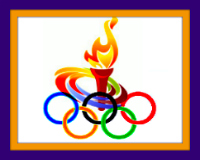






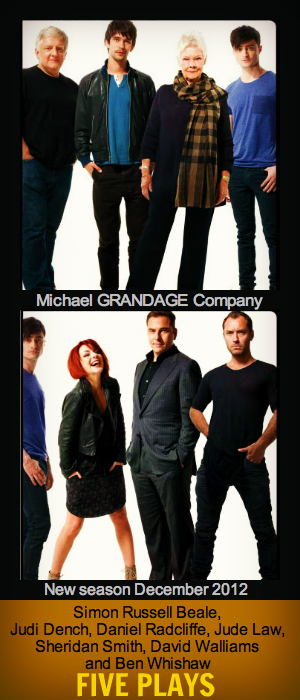
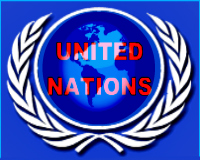


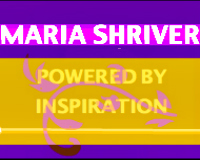

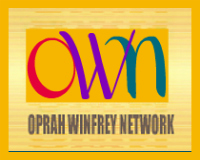





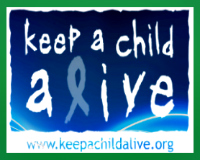




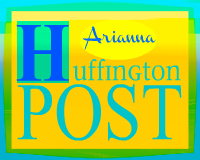

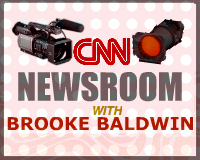




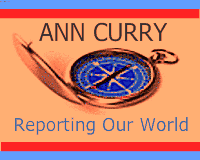

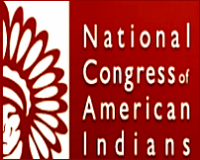



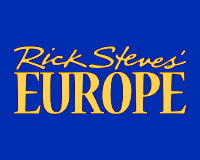
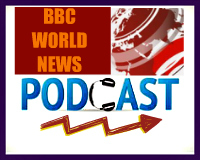









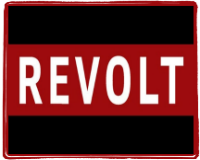






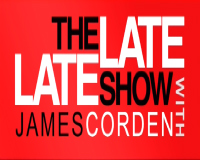



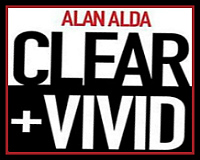




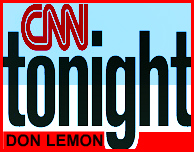
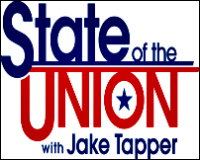



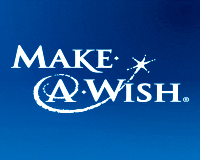














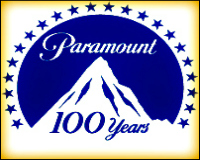



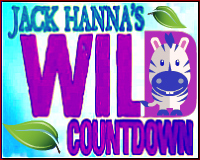


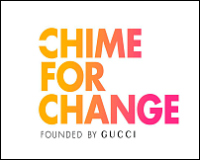



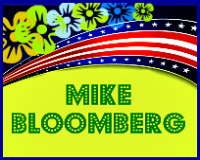
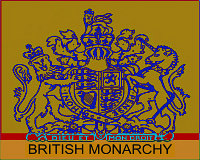
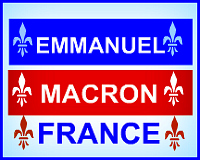












































































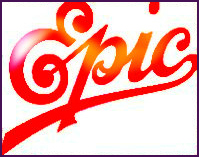

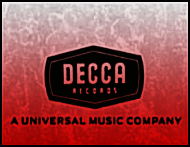


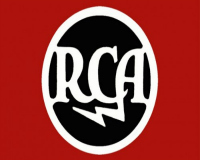
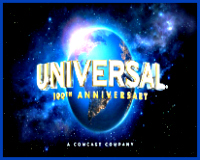
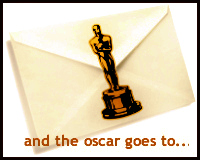

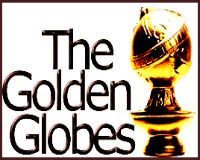
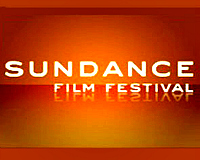



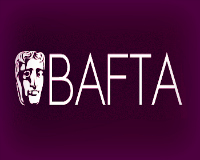


















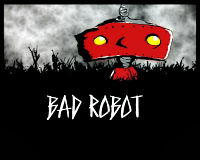

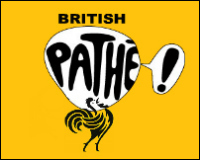
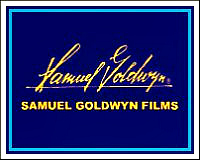


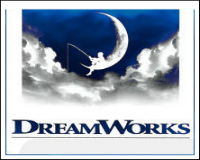


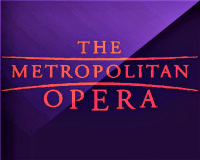




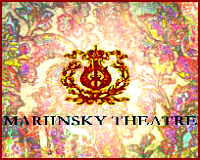





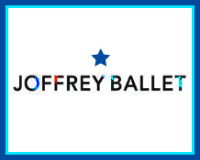





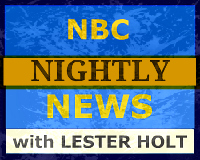



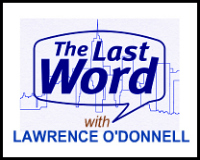
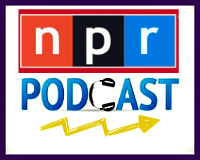
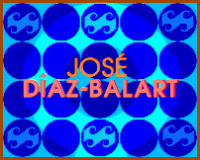






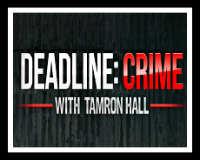
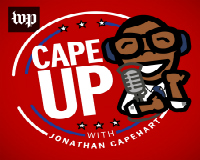




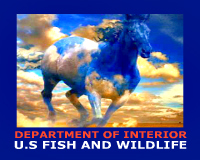


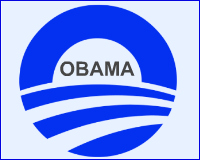
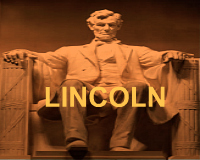

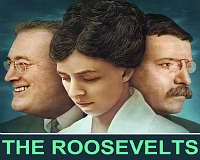
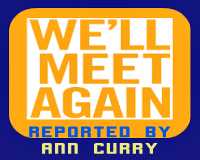
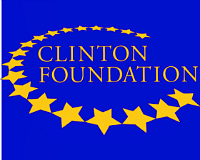

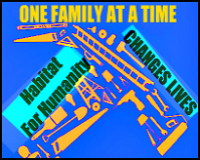


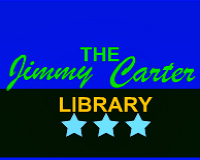


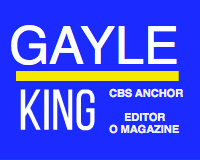


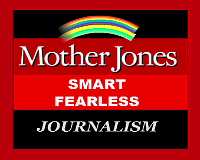
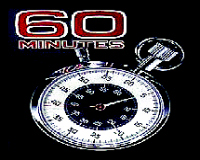








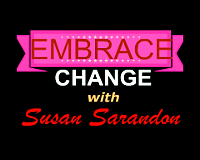
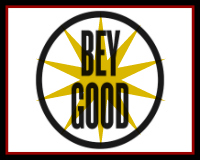








































































 Monday, February 17, 2014 at 12:25AM
Monday, February 17, 2014 at 12:25AM

